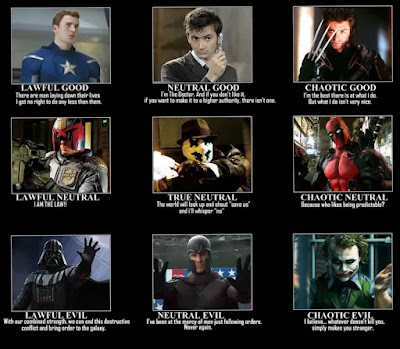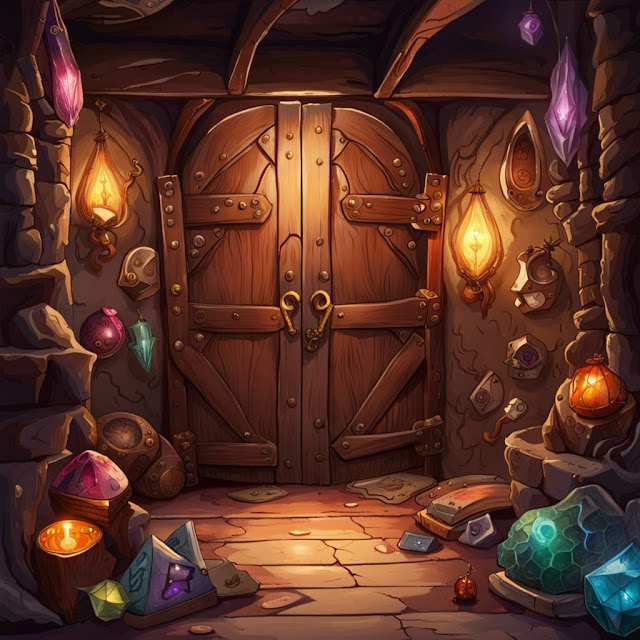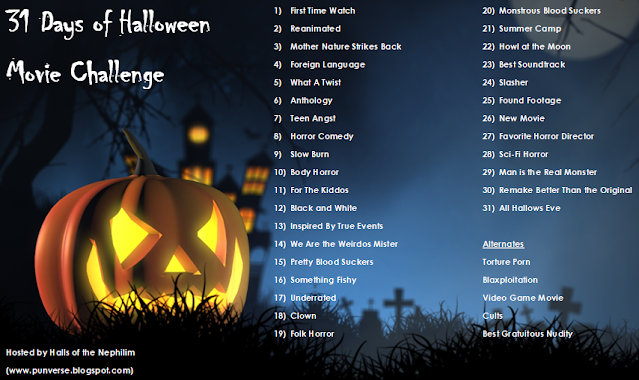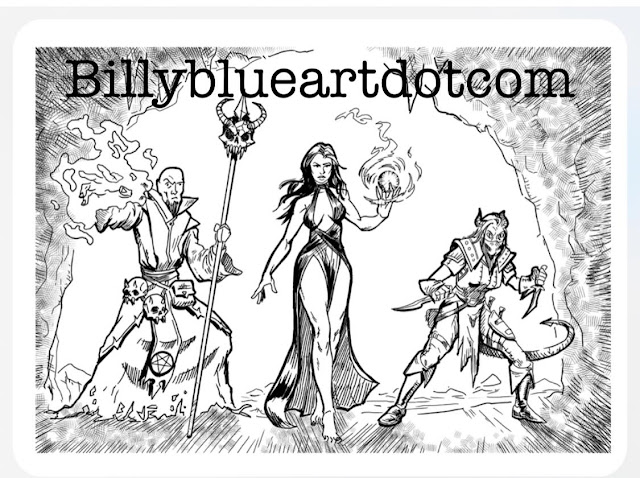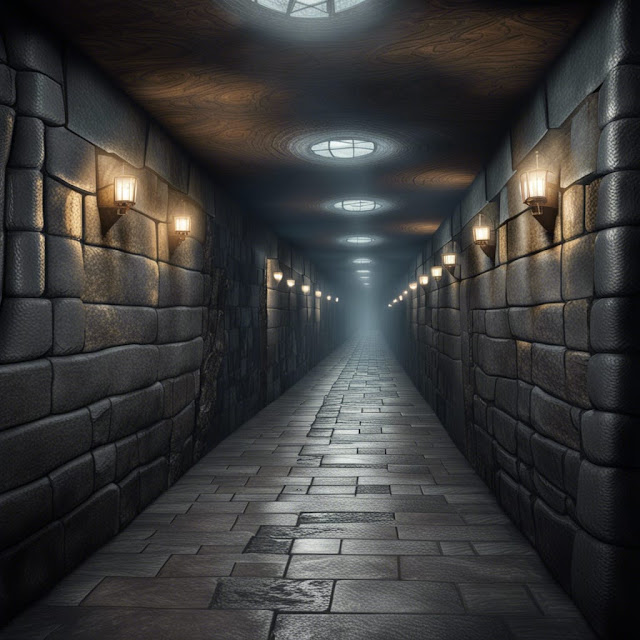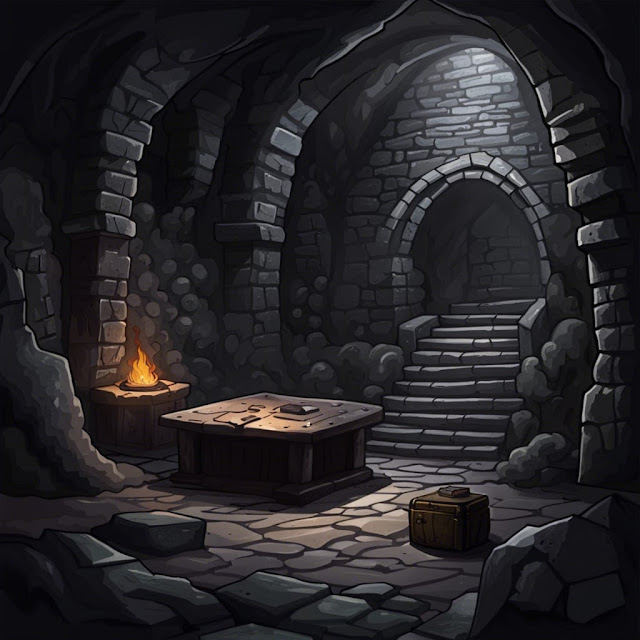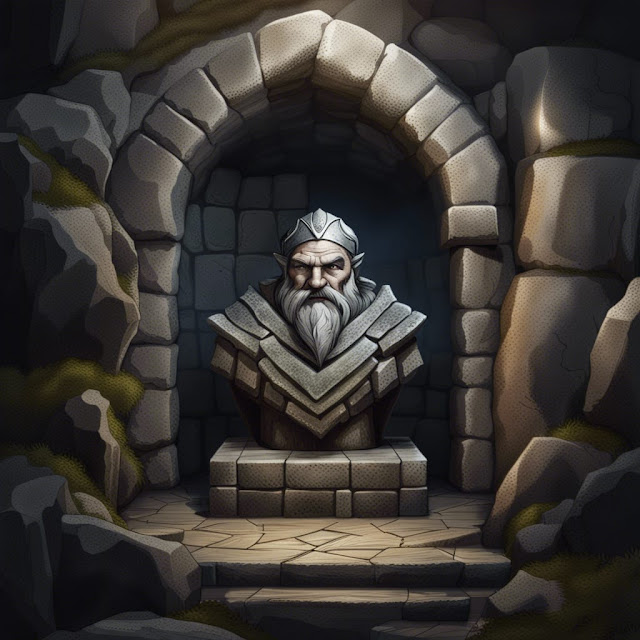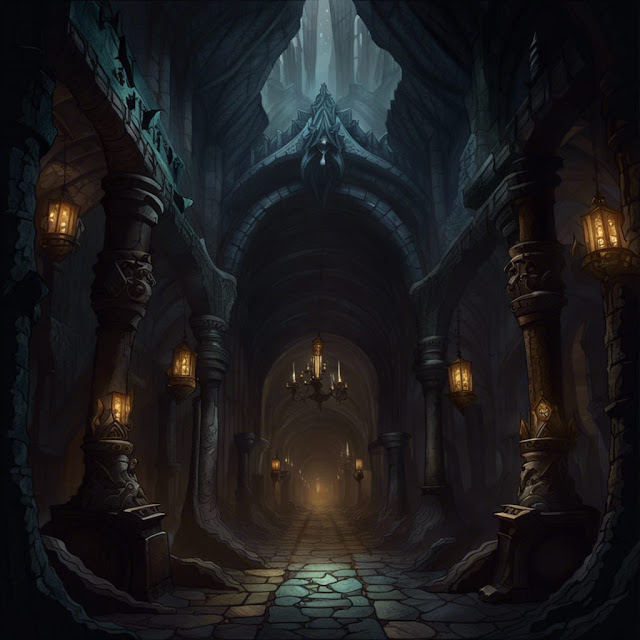No. Going back, the most hotly debated topic then and now is Alignment.
Reading some old Dragon magazines, Usenet posts, or modern social media, people still love to argue about alignment. I have read a lot of self-proclaimed experts on D&D that get alignment completely wrong both in terms of use and how it should be applied.
I have used alignment in D&D and some other games, but most games don't even have it and they are not less off for it.
And of late, I am thinking that D&D doesn't need it either.
I am not saying that "Evil" and "Good" do not exist in the game in some moral gray space. There is alignment as an idea, a universal moral concept, and alignment as a game mechanic. As a game mechanic, that time has now passed.
Cases in point.
I played a Lawful Good paladin in the AD&D 1st ed days. That's redundant because the only paladins were lawful good. However, he traveled with a Neutral Evil Assassin, which was explicitly against the rules. We solved that issue by having a prophecy that these two had to travel and adventure together because their fates were linked and they could not kill each other. What were their fates? Well we only found out later on (and there may have been some retconning) that the Paladin's son and the Assassin's daughter would fall in love. In this case, the rule about alignment got in the way of a good role-playing opportunity.
As time went on, the assassin was less and less evil. I eventually concluded that he was Chaotic Neutral with some evil tendencies. And my paladin became more and more Lawful Autocratic than anything. Rules have to be followed because they are The Rules. Alignment never served them well despite the restrictions both classes had on alignment. Yes, the hard-core rule lawyers will point out I wasn't playing them right or some other nonsense to justify their memorization of rules, but that is the same problem my Paladin had. Rules for the sake of Ruling and nothing else.
Another issue. I am playing the Baldur's Gate 3 video game now and I love it. While there is a Detect Good/Evil spell, nothing in the game is alignment-specific.
There is a Hobgoblin named Blurg, a member of the Society Of Brilliance, an order of sages who want to study and bring culture and civilization to the Underdark. Talk to him about it, and he is obviously intelligent and wants to study the rich ecological conditions in the Underdark and it's vast richnesses that could allow everyone to live together harmoniously. He even has a friend, a Mindflayer named Omeluum, who wants to help the PCs. Both are from "evil" species, yet they do not perform an evil action. Indeed the actions they do perform can best be described as good or at worst self-serving. So maybe Chaotic Good? Neutral is what the Forgotten Realms Wiki has him as.
What about Karlach the tiefling? She has killed, but yet she is one of the nicest, happiest characters in the game. Shadowheart worships the evil Goddess Shar, she should be evil by D&D rules, yet she dislikes needless violence and has a soft spot in her heart for kids and animals. And SPOILER: You can also convert her to the Goddess Selûne, effectively changing her cleric's alignment with no loss of powers. Granted Shar and Selûne have a complicated relationship.
At no point in character creation did I list an alignment.
Even in the image above, the representative characters don't fit all that well all the time. Darth Vader was redeemed in the end. The Doctor has murdered millions even entire species. Captain America though might fit Lawful Good most of the time.
D&D 4 added the Unaligned alignment and made Succubi Lawful evil. D&D 3 made Orcs Chaotic Evil. D&D has published entire books where NPCs never had an alignment listed.
I use alignment, but I am seeing less and less need for it in my games. Spells like "Know Alignment" and "Protection from Good/Evil" now will rely more on hostile intent.
Now, Ill likely keep the Outer Planes as they are and will have to figure that out someday, but for now I am content ditching the whole system.

